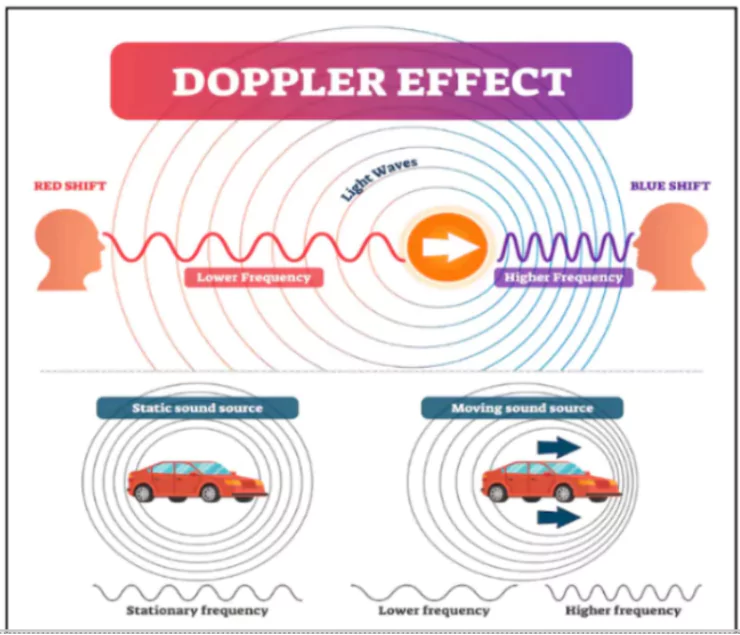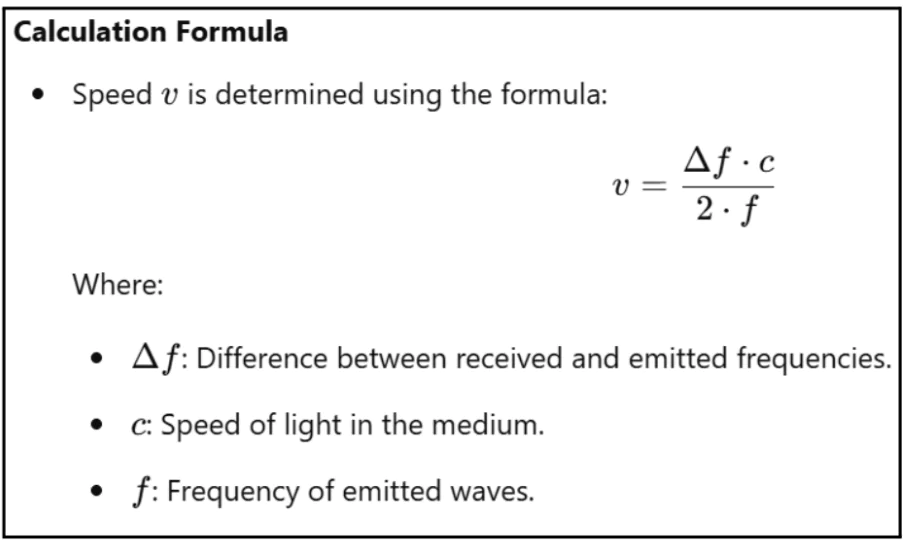
Speed guns are being increasingly used to monitor speeding vehicles, ensuring traffic safety and enforcing speed regulations.
About Speed Gun
- A speed gun is a device used to measure the speed of a moving object without direct contact.
- It operates by emitting electromagnetic radiation, which reflects off the moving object.
- The device calculates the object’s speed using the Doppler effect.
- Speed guns were originally developed during World War II for military purposes and later adapted for civilian use.
Enroll now for UPSC Online Classes
Working Mechanism of Speed Gun

- Doppler Effect: The principle behind speed guns relies on the Doppler effect, discovered by Austrian physicist Christian Doppler.
- When an object moves towards or away from the speed gun, the frequency of the reflected waves changes.
- Approaching object: Frequency increases.
- Receding object: Frequency decreases.
- The difference in frequency is used to calculate the object’s speed.

Types of speed Guns
| Aspect |
Radar Speed Guns |
LIDAR Speed Guns |
| Technology Used |
Use radio waves to measure speed. |
Use laser light (Light Detection and Ranging). |
| Accuracy |
Lower accuracy due to radio wave divergence. |
Higher accuracy due to minimal beam divergence. |
| Targeting |
May struggle with multiple objects due to wave spread. |
Better suited for specific targeting with focused beams. |
| Primary Application |
Commonly used for traffic speed monitoring. |
Preferred for applications requiring precise measurements. |
| Components |
Contains a transmitter for radio waves and a receiver for reflected waves. |
Contains a laser emitter and a detector for reflected beams. |
| Operation |
Calculates speed using the Doppler effect based on radio wave frequency shifts. |
Calculates speed based on changes in laser light frequency. |
| Limitations |
Susceptible to interference and inaccuracies in crowded environments. |
More expensive and sophisticated but highly accurate. |
Check Out UPSC NCERT Textbooks From PW Store
Applications of Speed Gun
- Traffic Monitoring: Used by law enforcement to measure vehicle speeds and enforce traffic regulations.
- Sports: Used by coaches and trainers to measure the speed of balls, athletes, or vehicles in sports like cricket, baseball, and racing.
- Industrial Uses: Employed in industries requiring precise motion tracking, such as manufacturing or logistics.
![]() 23 Dec 2024
23 Dec 2024




